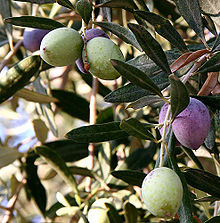Conifers

Conifers are the oldest living things on the planet. They have an enduring popularity that has been present throughout human history, with certain species holding great cultural significance worldwide. Key to their popularity is their versatility and divergence across the species. They can be planted in the garden and left to grow, but they can also be clipped to form wonderful topiary shapes. They are also evergreen, which ensures that all year round they look their vivid best. No two conifers are the same. Here we’ll present you with a few examples of very different species of conifers.
Juniperus Horizontalis “Blue Chip” (Creeping Blue Chip Juniper)
The Blue Chip is an easy tree to grow. It will tolerate most conditions and will grow well if confined in a pot or trough or if planted in the ground. It is great for ground cover and its bright blue leaves draw your gaze.
Leyland Cypress – “Castlewellan Gold” (Cupressocyparis Leylandii)
The Leyland Cypress can be trimmed to make a formal hedge or it can be left to grow into a magnificent tree. It has gold foliage.
Italian Cypress / Mediterranean Cypress (Cupressus Sempervirens ‘Pyramidalis’)
The Pyramidalis is a totem-like conifer which you will recognise if you’ve ever been to Tuscany. Can grow up to 30m high.
Pinus Mugo Mughus (Mugo Pine/Dwarf Mountain Pine)
Pinus Mugo can be a large, spreading shrub or a small tree with short, dark green needles and dark brown cones. Valued for its fragrance.
Cedrus Atlantica “Glauca Pendula” (Weeping Atlas Cedar)
The Weeping Atlas Cedar is a slow growing conifer which can be manipulated to form a waterfall-like shape. A very dramatic tree, this would easily be the centrepiece of even the most impressive gardens.

Are you looking for conifers?



